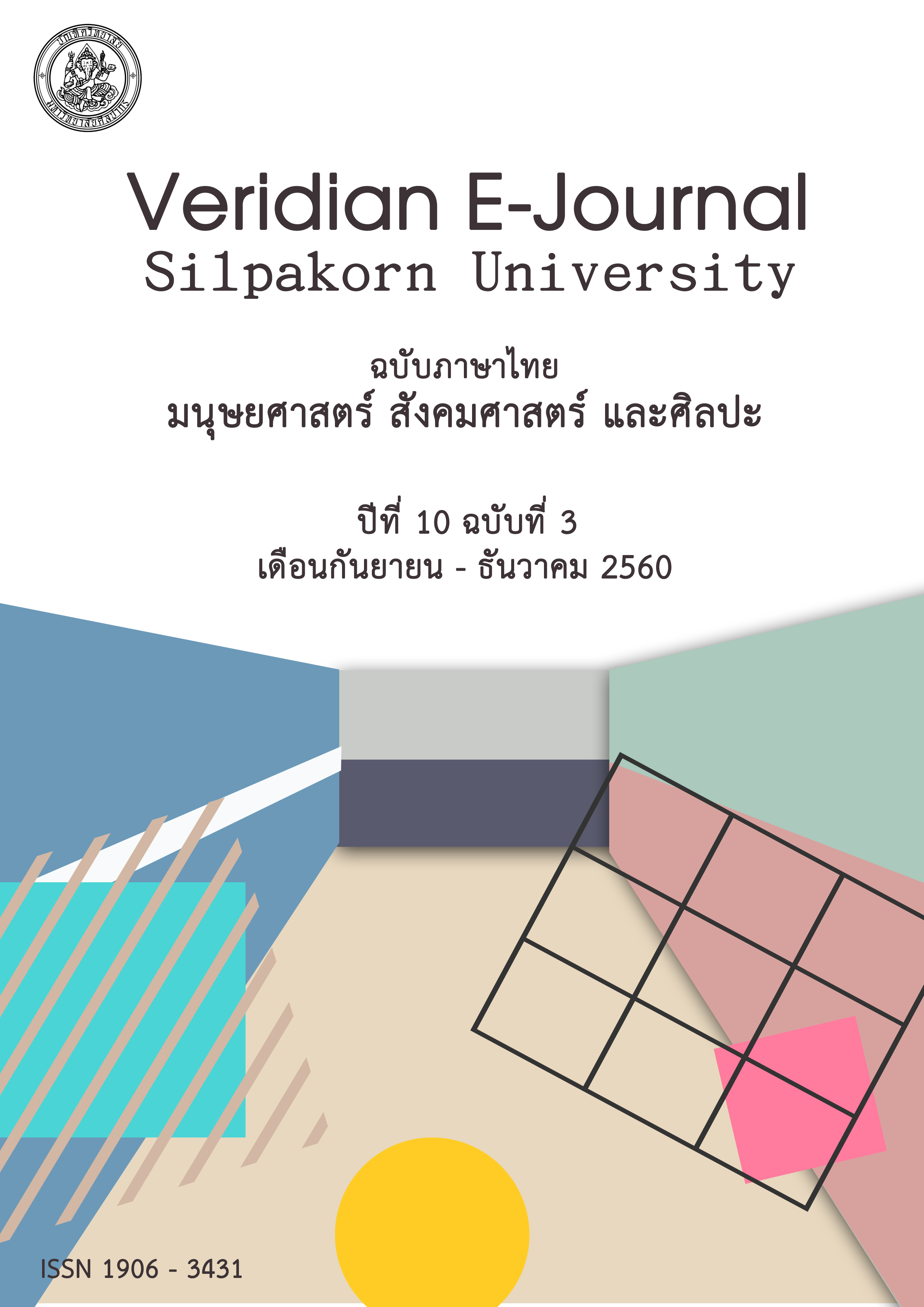การพัฒนาแนวทางการจัดสรรงบประมาณเพื่อส่งเสริมการศึกษานอกระบบของประเทศไทย
Main Article Content
Abstract
การวิจัยนี้มีวัตถุประสงค์คือ 1) ศึกษาสภาพการจัดสรรงบประมาณเพื่อส่งเสริมการศึกษานอกระบบ และ 2) พัฒนาแนวทางการจัดสรรงบประมาณเพื่อส่งเสริมการศึกษานอกระบบของประเทศไทย โดยกลุ่มตัวอย่างจาก 70 ศูนย์การศึกษานอกระบบและการศึกษาตามอัธยาศัยอำเภอ (ศูนย์กศน.อำเภอ) ใน 7 จังหวัดได้แก่ จังหวัดลำปาง สระบุรี ร้อยเอ็ด อุบลราชธานี ระนอง กรุงเทพมหานคร และนครนายก ซึ่งได้มาจากสุ่มตัวอย่างแบบช่วงชั้น (Stratified random sampling) โดยใช้แบบสอบถามเป็นเครื่องมือในการศึกษาซึ่งแบ่งออกเป็น 3 ตอน ได้แก่ ข้อมูลทั่วไป สภาพการจัดสรรงบประมาณ และแนวทางการจัดสรรงบประมาณ ผลการวิจัยมีดังนี้
- สภาพโดยรวมของการจัดสรรงบประมาณเพื่อส่งเสริมการศึกษานอกระบบของประเทศไทยในช่วงระหว่างปีงบประมาณ 2556-2558 อยู่ในระดับปานกลาง เมื่อจำแนกสภาพออกเป็น 4 ด้านพบว่า ปัญหาที่พบเรียงตามรุนแรงของสภาพปัญหาได้แก่ 1) ความสอดคล้องของงบประมาณที่ได้รับการจัดสรรกับนโยบายการศึกษา 2) ความเหมาะสมของกฎ ระเบียบ ข้อบังคับการเบิกจ่ายงบประมาณ 3) ความเพียงพอของงบประมาณที่ได้รับการจัดสรรเพื่อการบริหารการศึกษา และ 4) ความตรงต่อเวลาของงบประมาณที่ได้รับการจัดสรร ตามลำดับ เมื่อทดสอบความแตกต่างของระดับคะแนนเฉลี่ยความคิดเห็นของสภาพการจัดสรร จำแนกเป็นรายจังหวัด ภาค และขนาดจังหวัด ไม่พบว่ามีความแตกต่างกันอย่างมีนัยสำคัญทางสถิติ ณ ระดับ .05 2. แนวทางการจัดสรรงบประมาณเพื่อส่งเสริมการศึกษานอกระบบ ควรประกอบไปด้วย 4 หลักการ เรียงตามลำดับความเหมาะสมดังนี้ หลักการบริหารจัดการมี 3 องค์ประกอบย่อย ได้แก่ การวางแผน การประสานงาน และการกำหนดเป้าหมาย หลักการงบประมาณมี 3 องค์ประกอบย่อย ได้แก่ ประสิทธิภาพ ประชาธิปไตย และยุติธรรม หลักการการศึกษานอกระบบมี 2 องค์ประกอบย่อย ได้แก่ ความเสมอภาค และ ความยืดหยุ่น และพระราชบัญญัติ นโยบายการศึกษา และแผนพัฒนาเศรษฐกิจและสังคมแห่งชาติมี 2 องค์ประกอบย่อย ได้แก่ การบริหารจัดการงบประมาณอย่างมีประสิทธิภาพและสามารถตรวจสอบได้ และการมีส่วนร่วมของภาคส่วนอื่นๆ ในการจัดการศึกษา เมื่อทดสอบความแตกต่างของระดับคะแนนเฉลี่ยความคิดเห็นของรายละเอียดในแต่ละองค์ประกอบย่อยใน 4 หลักการ จำแนกเป็นรายจังหวัด ภาค และขนาดจังหวัด พบว่าขนาดของจังหวัดมีความคิดเห็นที่แตกต่างกันอย่างมีนัยสำคัญทางสถิติ ณ ระดับ .05 กล่าวคือ จังหวัดขนาดเล็กมีข้อเสนอแนะในรายละเอียดของแต่ละองค์ประกอบแตกต่างไปจากจังหวัดขนาดใหญ่และขนาดกลาง
The aims of this research were 1) to study the situation of budget allocation to promote non-formal education and 2) to develop the guidelines for the budget allocation to promote non-formal education in Thailand. 70 districts of the office of non-formal education and informal education from 7 provinces namely Lampang, Saraburi, Roi-et, Ubonratchathani, Ranong Bangkok and Nakhonnayok were selected to study by Stratified random sampling. This study employed a questionnaire that consisted of 3 parts, part one personal data, part two the situation of budget allocation to promote non-formal education and part three the guidelines for the budget allocation to promote non-formal education. The findings were as follows:
- The results of overall situation assessment of budget allocation to promote non-formal education in Thailand during fiscal year 2013-15 was in a moderate level. The issues in budget allocation were categorized and ranked by the level of severity as follows; First, The congruency of Educational policy and received budget Second, Impropriate of regulation for budget disbursement. Third, Inadequate budget for educational administration. and Forth, Punctuality of budget received respectively. The difference in average budget allocation problem by province, region and size of province were not statistically significant at .05.
- The guidelines to improve the budget allocation to promote non-formal education should consist of 4 principles namely 1) Principles of budget management that have 3 elements i.e. Planning, Coordinating and Targeting 2) Principles of budgeting that have 3 elements i.e. Efficiency, Democracy and Equity. 3) Principles of Non-formal education have 2 elements i.e. Equality and Flexibility and 4) Principles of Promotion of Non-Formal, Informal Educational act B.E.2551 (2008) National Education Policy, National Education Plan and The national economic and social development plan have 2 elements i.e. effective budget execution for non-formal educational administration and accountability and the participation of stakeholder for non-formal educational administration. The difference in average the guidelines for budget allocation by size of province was statistically significant at .05.

